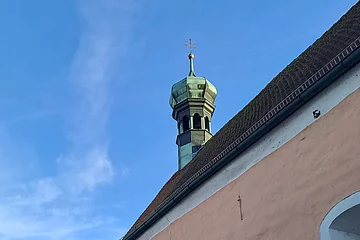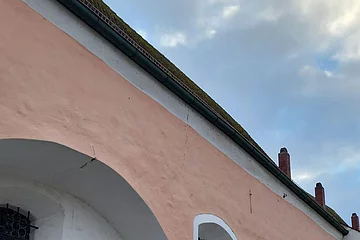On 15th September 1231, Duke Ludwig I., later called the “Kelheimer“, was stabbed to death by an unknown attacker, a murder that not only shocked the people of Kelheim at this time but has remained an unsolved mystery ever since. Ludwig the Kelheimer (“Ludwig der Kelheimer “) belonged to the House of Wittelsbach, a family of high nobility in Bavaria. In honor of his murdered father, Otto the Illustrious (“Otto der Erlauchte“) had a chapel built, which was later called Otto Chapel (“Ottokapelle“). The little church was built right in the very spot of the old city gate, which was not too long after replaced by the Danube Gate (“Donautor “). At the spot where Ludwig the Kelheimer was murdered, the high altar is allegedly located. In the 16th century, the Otto chapel was converted into a collegiate church. The church was altered once again in the 19th century and was last renovated in 1990/1991. On both sides of this little chapel you can see two medieval homes for the sick and elderly, one for the poor and one for the rich people (“Armes und Reiches Spital“).These charitable institutions were also built by Otto to honor and commemorate his father Ludwig. The “Spitäler” were built on the Old Market so that their inmates could still take part in community life. A cross was erected next to the Otto Chapel just a few steps from the street. By the end of the 19th century, as traffic was increasing, the cross was removed. Today you can find it in a niche in the facade on the left side of the Otto Chapel. But a bronze cross in the pavement shows its original location.
Before the city was rebuilt by Duke Otto II., the Old Market had been an important place for the urban life. The square was much more crowded and offered space for big gatherings and markets. Furthermore, it was a place where the city and the citizens negotiated big deals and important decisions. Nowadays the Old Market is not a major point of interest anymore, because the city had a new town square for a long time, but it hasn’t lost anything of his historic importance.


